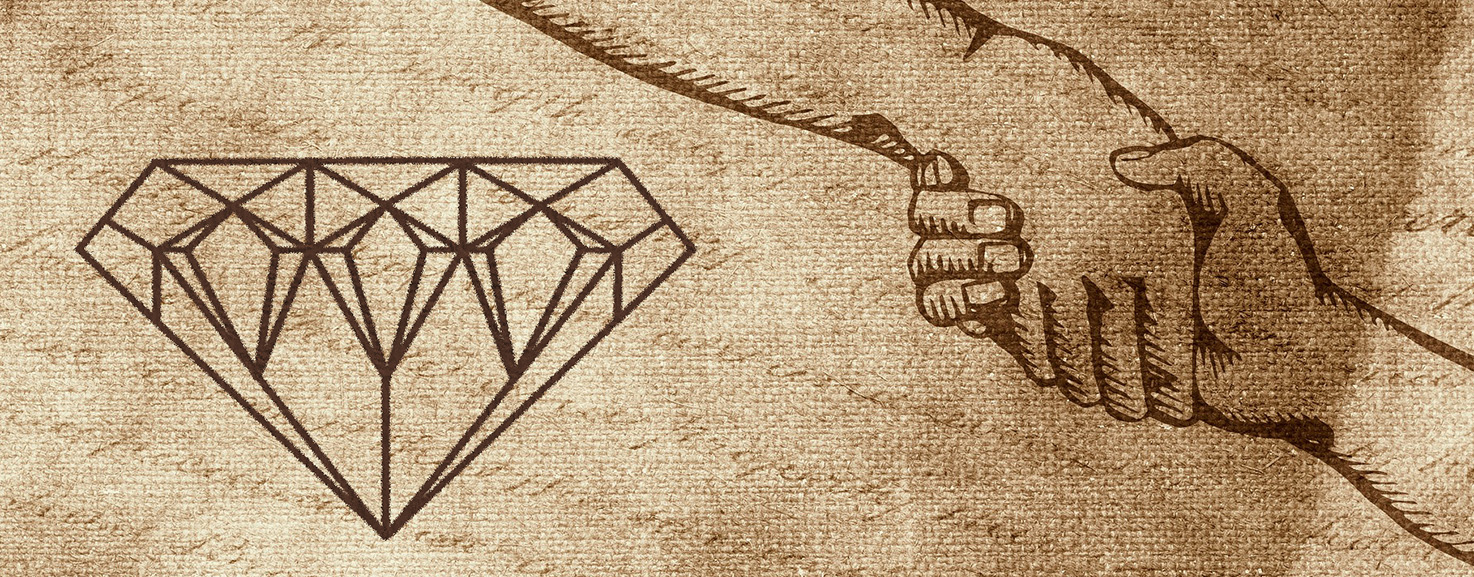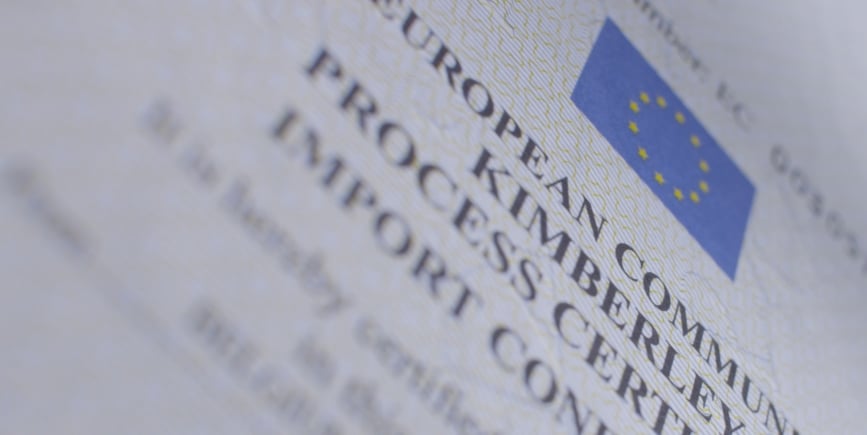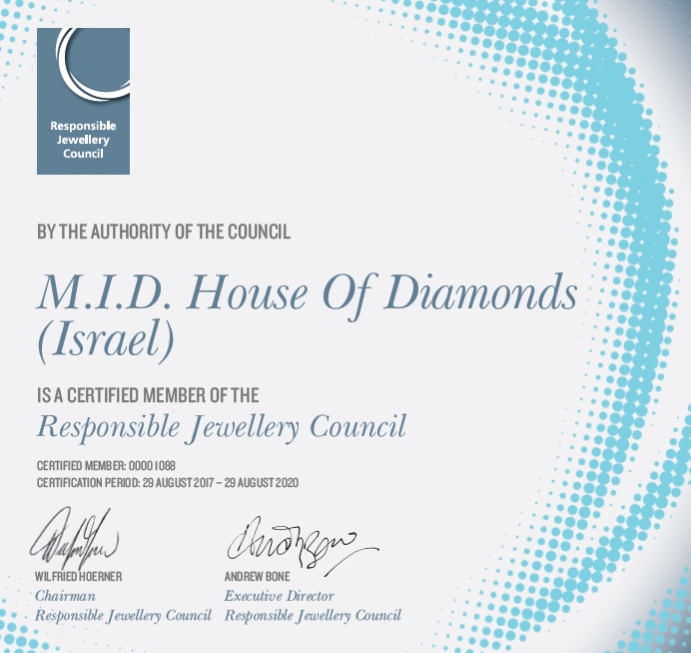Conflict diamonds, which achieved notoriety during the late 1990s and early 2000s, involved rough stones whose proceeds were used to finance bloody civil wars in Africa.
Blog
Home » Diamonds blog » THE FIFTH C OF A DIAMOND’S VALUE, ‘CONFIDENCE’
Focus on

It was not the presence of undisclosed synthetics that was surprising. Instances of man-made diamonds secreted into parcels among natural stones have been circulating for quite some time already. It was rather the fact that single cuts were involved. Frequently used in less expensive diamond jewelry, these are stones that are considered too small to be provided with standard brilliant round cuts of 57 or 58 facets. Instead, they typically feature 17 or 18 facets, and some as few as 16.
It reportedly was the first time that a synthetic single-cut stone has been detected mounted in jewelry, and the existence of such materials on the market greatly expanded the range of goods that can be considered at risk of improper and deceptive disclosure. The source of the synthetic material was not immediately apparent, but it was suggested that it may be waste from diamond wafers being grown for use in the electronics industries.
The proliferation of synthetic, or, as they sometimes are referred to, laboratory-grown or factory-grown diamonds, has added a new element to the range of factors that members of the diamond sector need to account for in protecting their product’s integrity. It used to be that a diamonds’ value was predominantly set by what is known as the four Cs – namely carat, clarity, color and cut. But there also is a fifth C, and that is “confidence.”
SYNTHETICS AND TREATED DIAMONDS
The origin of the diamond, and more specifically whether it is unique or whether it was grown artificially over the course of several days in a laboratory, is today one of a series of risks faced by diamond buyers. There also a number of treatments, some temporary and some permanent, each of which is likely to reduce the value of the gem, if they previously had not been disclosed to the buyer.
Fracture filling is one of the more frequently encountered treatments. It involves the injection of a clear substance into tiny cracks within a diamond, thereby improving the stone’s clarity grade.
Laser drilling is another treatment. It involves drilling with a laser beam a minute tunnel through the diamond in order to remove a dark spot buried inside the stone, once again improving its clarity grade.
High-Pressure, High Temperature (HPHT) treatment, or annealing as it sometimes is referred to, is a process that dramatically changes the color of a yellowish or brownish diamond, rendering it whiter or devoid of color. HPHT can also can produce brownish yellow, orangey-yellow, green, blue, and even pink color diamonds. Irradiation is another artificial method used to create attractive Fancy Colored Diamonds.

Conflict diamonds, which achieved notoriety during the late 1990s and early 2000s, involved rough stones whose proceeds were used to finance bloody civil wars in Africa.

Two diamonds with clearly noticeable surface-reaching fractures. Fracture-filling treatment would render these cracks virtually invisible to the naked eye.

A set of diamonds whose fancy colors have been achieved through irradiation. Several irradiation alternatives are available today, with the most commonly used being neutron bombardment in a nuclear reactor.
ETHICAL AND REPUTATIONAL CHALLENGES
Other risks do not concern the gemstone’s physical properties, but rather are reputational, and refer to improprieties that occur in the chain of distribution leading up to the final sale. The most well-known of such risks are conflict diamonds, which according to the current definition are stones that were derived from rough merchandise, where the revenues generated were used to finance civil conflict.
Other reputational risks include those associated with money laundering and terrorist financing. Because of they are of high value, easily transportable because of small size and are fungible, diamonds are regarded by many authorities as being akin to currency, and so are subject to similar scrutiny.
A number of other reputational risk should be considered, among them child labor; poor health and safety standards in in the mines and cutting and polishing factories, and environmental damage. In the diamond industry, however, where well over 95 percent of the goods flowing into the pipeline are mined and sold by established mining companies, these risks are minimal, at least compared to colored gemstones, where up to 80 percent of production comes from artisanal sources.
VERIFIABLE METHODS OF MITIGATING RISK
For buyers of diamonds, be they merchandise that will be set in jewelry or goods bought for investment purposes, it is possible to take measures that will mitigate the various risks almost completely.
A growing proportion of diamonds are being routinely screened for synthetics today, and systems that can screen large number of smaller and lower cost goods are becoming more commonly available.
Diamonds that are submitted to reputable gemological laboratories for grading are also routinely tested to ascertain whether they are natural or synthetic, or subject to what is considered a treatment, including fracture filling, laser drilling, HPHT and color irradiation. If detected the treatment will be described on the diamond grading report. If the diamond is found to be synthetic, a different grading report will typically be issued, clearly indicating that this is a laboratory-grown diamond.

A Kimberley Process certificate issued on a parcel of rough diamonds by the European Union.
Ethical and reputational risk requires a degree of due diligence on the part of diamond traders. According to resolutions passed by the United Nations Security Council, trading and export of rough diamonds is limited to countries that are members of the Kimberley Process. This means that every time rough diamonds are exported, they are checked and sealed by an official Kimberley Process Authority, which issues them with a certificate, to verify that they were obtained from sources not associated with armed conflict. Upon entry into a new country, the parcel is examined and the certificate checked and recorded by that nation’s Kimberley Process Authority.
Once a diamond has been polished, it is no longer subject to KP regulations, but the World Diamond Council, which is the body representing the industry in the Kimberley Process, introduced what is referred to as the System of Warranties, in which every time a polished diamond changes hands the buyer if issued with an invoice containing a declaration that it was obtained from a non-conflict source.
Responsible supply chain management systems are becoming more widely used in the industry, and while being introduced voluntarily, there is increasingly pressure to do so from major jewelry retailers, who have declared that they will only obtain supply from companies that are compliant with a recognized system. Most probably the most well-known of those is that created by the Responsible Jewelry Council, which today has more than 1,000 members worldwide, with about two thirds them have undergone third part auditing to ensure that they meet compliance standards. Among them is MID Diamonds.

A certificate awarded in 2017 by the Responsible Jewelry Council to MID House of Diamonds, attesting that the company had been found by independent audit to be compliant with the RJC’s strict Code of Practice.
